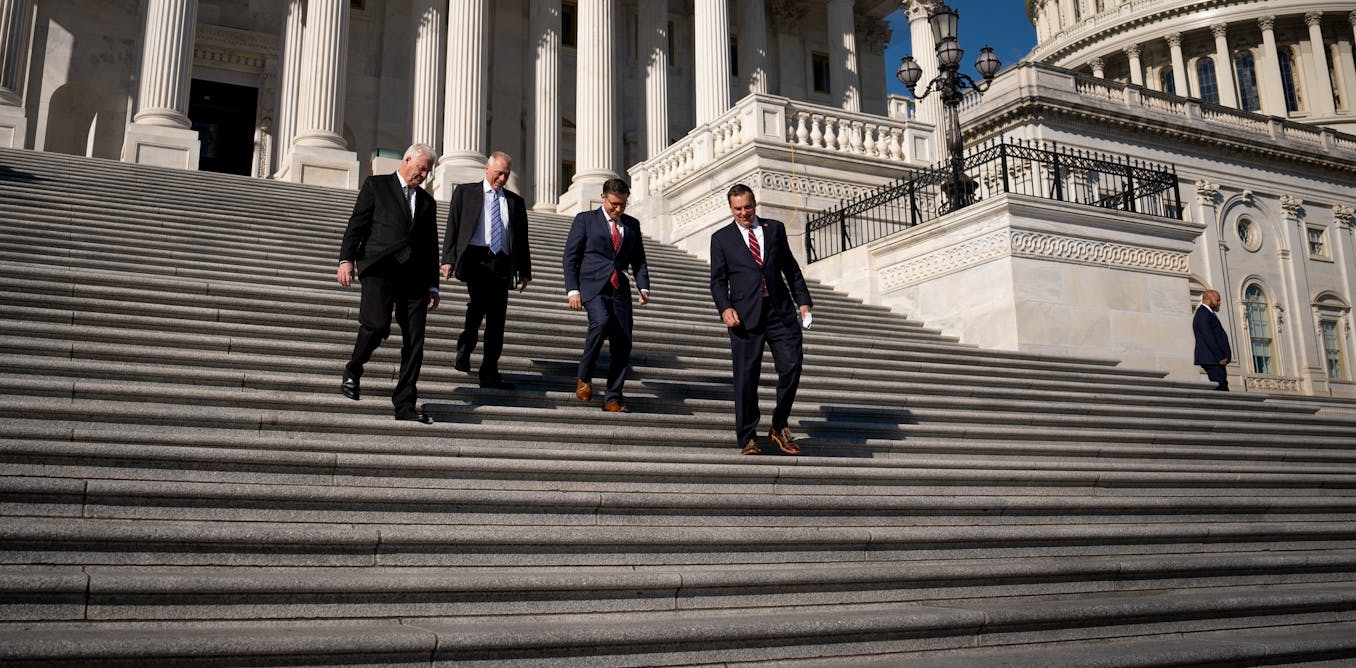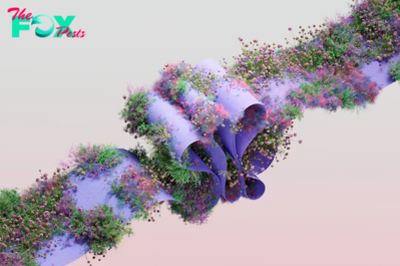Business
What the Harvard and Boeing Boards Teach Us About Groupthink
One overlooked aspect of the resignation of Harvard University President Claudine Gay in January is why Harvard’s 400-year-old governing corporation, comprised of titans of industry, academia, and government, appeared so caught off guard by the public’s reaction to Gay’s quickly mounting problems over her congressional testimony and plagiarism charges. Damning reports described flat-footed board members marooned at holiday destinations engaged in reactive decision-making.
Similar questions arose regarding Boeing’s paralysis over a years-long crisis in quality control of its 737 MAX fleet. Did no one in charge think the public would react poorly to news that the plane was deemed sufficiently dodgy that Alaska Airlines had restricted it from flying over open water to Hawaii?
Like all organizations, non-profit and corporate boards can fall prey to groupthink, silo effects, or short-term or trendy thinking that ultimately work against the interests of the entity they are entrusted to oversee. A large scientific literature has explored factors affecting board function, from disciplinary and sociodemographic diversity to size and deliberation processes. A less explored factor is how the internal network structure of the board can affect its performance.
But findings in network Science from the last 20 years shed light on how the connections among members of a group—and factors guiding the precise architecture (or “topology”) of these connections—can affect the ability of the group to make creative and sage decisions, to be open-minded, and to work well together to prevent or respond to crises.
The Network Structure of Groups
One classic insight appears in the work of Kellogg School sociologist Brian Uzzi and his colleague Jarrett Spiro who studied 326 Broadway musical production companies to see which features of groups resulted in a hit or a flop. Effective board governance is a kind of Goldilocks problem: too much familiarity between board members suppresses innovation; too many loners yields similar dysfunction.
Imagine that there are only five people putting on a Broadway show—the producers, composers, librettists, choreographers, performers, and so on. Basic math indicates that there will be a total of 10 possible network connections among these five individuals. One can then compute a quantity known as the “density” of network ties (which could range from 0%, or no connections, between any of the individuals, to 100%, or all 10 possible connections being present). Uzzi and Spiro found that the worst performance—whether in terms of the number of positive reviews or the amount of money made by the show—was achieved when nobody knew each other from before they worked on the show—that is, when the density was low. But he also found that performance was lousy when everybody already knew each other from before, and density was high.
The optimal performance was achieved at intermediate levels of density (for instance where four of the 10 possible ties are present, at 40% density). Some people who were strangers to the group are needed to bring in new ideas, and some who have a History of working together are needed to enact the collective vision. Follow-up research has extended these findings to groups performing a host of other tasks.
In a different line of research spearheaded by my group at Yale, the Human Nature Lab, we explored the impact of the fluidity of social ties within networked groups, demonstrating that fluidity can affect the cooperation and economic productivity of the groups. As with the density findings, we showed a parabolic relationship. In this case, if members of the group were stuck interacting only with assigned people, the group was not able to work well together. At the other extreme, if there was too much fluidity and there were no stable connections, the group was likewise not able to work together. Optimal performance was achieved at intermediate levels of social fluidity.
Additional work from our lab (and other labs) has shown that particular kinds of so-called long-range ties within network groups (ties that bridge otherwise disconnected sub-clusters of people), even within groups the size typical of boards, can affect the flow of information and reduce the likelihood of groupthink or premature convergence on a set of ideas. Some of our work has even shown that a modest level of antipathy between some members of a group can be helpful, because a few repulsive forces within a group may hasten its internal restructuring in a way that can ultimately be beneficial for its overall functioning.
All these structural features of boards help in another way: they may increase tolerance for people on a board with unusual but valuable perspectives. In other experiments, we have shown that people who think differently than their immediate peers (but not too differently) may actually help the group find an optimal solution to a problem. It takes a little bit of an irritant to make a pearl (and not kill the oyster).
Graphite or Diamond
Our experiments have shown how particular network structures can be conducive to better performance. The functioning of a board depends on more than just the traits and experiences of its individual members. Network Science indicates the ways in which the whole can be greater than the sum of its parts.
An analogy is helpful: take a bunch of carbon atoms and connect them one way, in layers, and they form graphite, which is soft and dark. Take the same carbon atoms and connect them another way, in tetrahedrons, and they form diamond, which is hard and clear. It’s not the carbon atoms themselves that give rise to these properties. Rather, it’s the connections between the atoms that can turn carbon into a diamond ring or a pencil tip. Similarly, the connections between members of a board—and not merely their individual characteristics—can affect whether it is capable of wisdom or foolishness.
How can we apply these insights?
In experiments done in partnership with a large international consulting firm a few years ago, we found that we could diagnose particular challenges in achieving cooperation, innovation, and coordination using a simple and brief set of social and economic games. Members of work groups of about a dozen people (who knew each other and had a history of working as part of the same team at a firm) could be placed into a small, temporarily constructed online social network with a particular structure of connections. They were connected to each other online, without knowing who exactly they were interacting with from among their team, in a network pattern; each person might have between one and six, say, ties to others from their team.
Then, they were given a collective task, and they had to coordinate to find a solution (for instance, they were told that each of them had to iteratively pick one of three colors that differed from the color chosen by the other few people to whom they were directly connected—which was not easy, since each person had to account for different connections. Some groups managed this better than others within the five minutes of time allotted. Within that short amount of time, we were thus able to identify the nature of various kinds of group dysfunction.
In addition to diagnostic applications, network Science can help solve problems, too. Many of the issues being faced by boards today, whether recent ones at various universities, the near-implosion at OpenAI, the collapse at Theranos, and other similar examples, could be addressed by better attention to network dynamics.
Boards face challenges, and their problems are not just a function of mis-directed objectives (such as an overly narrow focus on quarterly earnings or fealty to some ideological commitment) nor a function of the self-perPetuating insularity that makes them ignore external pressures or information. Rather, the way many boards themselves are structured may make them less capable of confronting the enduring reality of such stresses. Efforts to make it difficult or impossible for outsiders to join boards (such as happened at Yale a couple of years ago) will only exacerbate such problems.
Network insights can provide the right kind of disruption here—the kind that fosters creativity and fiscal stewardship, whether that is by bringing leaders down or keeping planes up.
-

 Business1d ago
Business1d agoUS House passes measure that could punish nonprofits Treasury Department decides are ‘terrorist’
-

 Business1d ago
Business1d agoFast fashion may seem cheap, but it’s taking a costly toll on the planet − and on millions of young customers
-

 Business2d ago
Business2d agoNew Information: These HV Big Lots Are Now Staying Open
-

 Business2d ago
Business2d agoBrush Fire Rages On Near Butternut In Great Barrington, MA
-

 Business4d ago
Business4d agoCarbon offsets can help bring energy efficiency to low-income Americans − our Nashville data shows it could be a win for everyone
-

 Business4d ago
Business4d agoWorkplace diversity training programs are everywhere, but their effectiveness varies widely
-

 Business5d ago
Business5d agoFirm bosses urged to make use of Welsh language to revitalise rural economic system
-

 Business5d ago
Business5d agoDonor-advised funds are drawing a lot of assets besides cash – taking a bigger bite out of tax revenue than other kinds of charitable giving



























